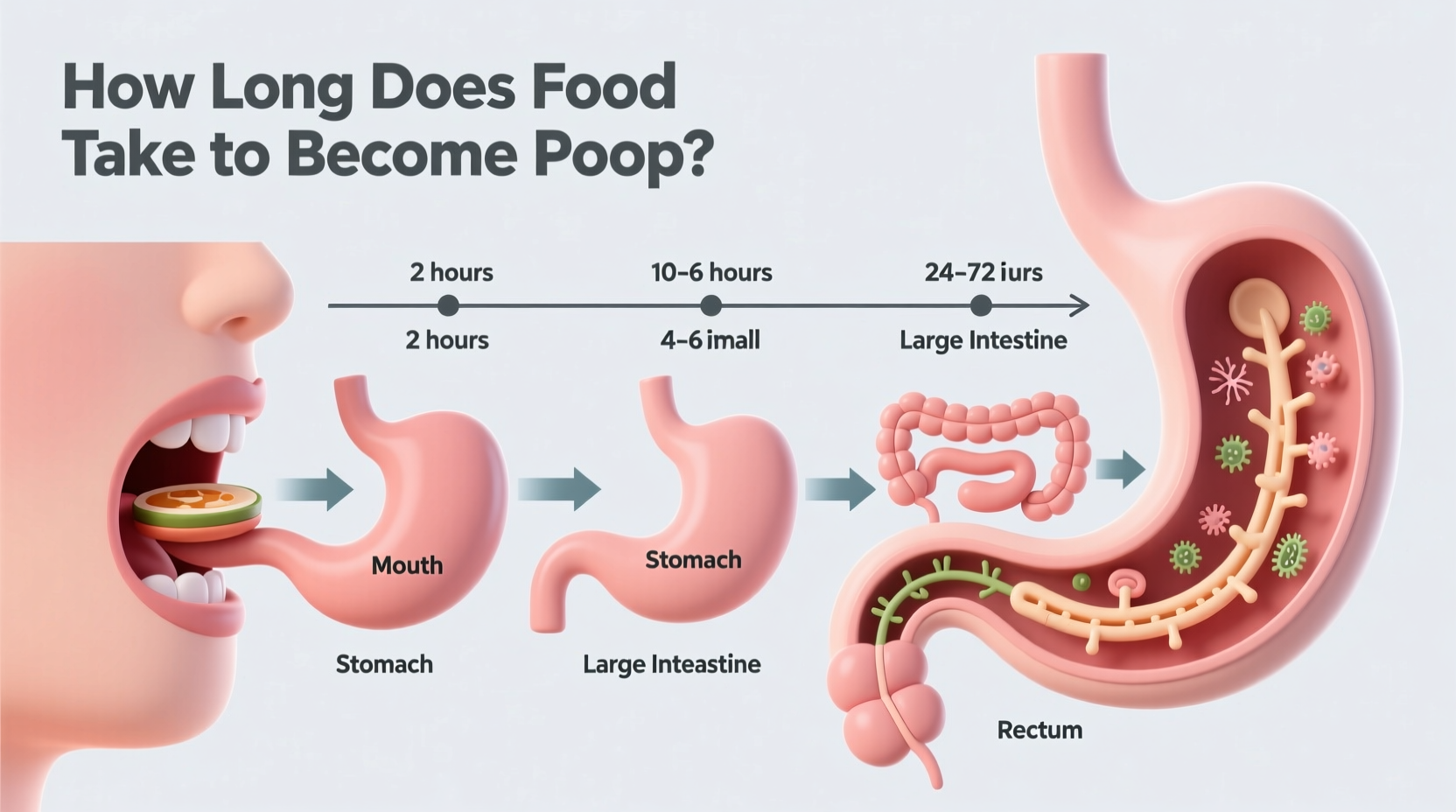Ever wondered what happens after you swallow that last bite of your meal? The journey from plate to toilet isn't as straightforward as many assume. Understanding your digestive transit time provides valuable insights into your overall gut health and can help identify potential issues before they become serious concerns.
The Digestive Timeline: What Actually Happens
Your digestive system works like a highly efficient assembly line, processing food through multiple stages before elimination. Let's break down the actual journey:
| Digestive Stage | Typical Duration | Key Processes |
|---|---|---|
| Mouth to Stomach | 0-2 hours | Initial breakdown through chewing and enzymatic action in saliva |
| Small Intestine | 2-6 hours | Nutrient absorption and further breakdown by bile and pancreatic enzymes |
| Large Intestine (Colon) | 10-59 hours | Water absorption, bacterial fermentation, stool formation |
| Total Transit Time | 24-72 hours | Complete journey from consumption to elimination |
This timeline comes from research published by the National Institute of Diabetes and Digestive and Kidney Diseases, which has conducted extensive studies on gastrointestinal motility. Contrary to popular belief, food doesn't simply transform into waste within 24 hours—the process is significantly more complex and variable.

Why Your Digestive Speed Varies
Several factors influence how quickly your body processes food. Understanding these can help you interpret your own digestive patterns:
Dietary Influences
Fiber content dramatically affects transit time. A high-fiber diet typically moves through your system faster than a low-fiber one. According to Mayo Clinic research, adults consuming the recommended 25-30 grams of daily fiber experience transit times at the lower end of the spectrum (24-48 hours), while those with low-fiber diets often fall in the 48-72 hour range.
Fat content also plays a role—high-fat meals slow gastric emptying, extending the overall digestive process. Hydration levels directly impact stool consistency and movement through the colon.
Biological Factors
Gender differences are well-documented in digestive research. Women generally have slower colonic transit times than men, with studies showing women's average total transit time is approximately 15 hours longer. Age affects digestion too—transit time tends to increase as we grow older due to decreased muscle tone in the digestive tract.
Health Considerations
Certain medical conditions significantly alter digestive timing. Irritable Bowel Syndrome (IBS) can cause either rapid transit (diarrhea-predominant) or slow transit (constipation-predominant). Inflammatory Bowel Disease (IBD) often accelerates the process, while conditions like hypothyroidism can dramatically slow it down.
When to Pay Attention to Your Digestive Timing
While 24-72 hours represents the normal range for complete digestive transit, certain patterns warrant attention:
- Consistently less than 24 hours may indicate malabsorption or digestive disorders
- Persistent transit times exceeding 72 hours could signal constipation issues
- Sudden changes in your usual pattern deserve monitoring
- Accompanying symptoms like pain, blood, or significant weight loss require medical evaluation
The Bristol Stool Chart, developed by medical researchers at the University of Bristol, provides a standardized way to assess stool form and consistency, which correlates with transit time. Types 3-4 represent ideal stool consistency associated with healthy transit times.
Optimizing Your Digestive Health Naturally
You can influence your digestive timing through practical lifestyle adjustments:
Dietary Strategies
Increase fiber gradually to 25-30 grams daily through fruits, vegetables, and whole grains. Sudden increases can cause bloating and gas. Stay consistently hydrated—aim for half your body weight in ounces of water daily. Incorporate probiotic-rich foods like yogurt, kefir, and fermented vegetables to support healthy gut bacteria.
Lifestyle Modifications
Regular physical activity stimulates intestinal contractions. Even 30 minutes of moderate exercise daily can improve transit time. Manage stress through mindfulness practices—chronic stress negatively impacts digestive motility. Establish consistent meal times to regulate your digestive rhythm.
When to Consult a Professional
If you experience persistent changes in your digestive pattern lasting more than two weeks, consult a healthcare provider. This is especially important if accompanied by unexplained weight loss, rectal bleeding, severe abdominal pain, or family history of digestive disorders. Medical professionals can perform tests like the wireless motility capsule study to accurately measure your specific transit time.
Common Misconceptions About Digestive Timing
Several myths persist about how quickly food becomes waste. The notion that everything you eat appears as stool within 24 hours is inaccurate—digestion is a multi-stage process that typically takes much longer. Another misconception suggests that longer transit times automatically mean better detoxification, but in reality, excessively slow transit can lead to toxin reabsorption.
Understanding your personal digestive rhythm provides valuable health insights without falling for oversimplified explanations. Your digestive system's timing reflects your overall gut health, which connects to numerous aspects of your wellbeing beyond just elimination frequency.











 浙公网安备
33010002000092号
浙公网安备
33010002000092号 浙B2-20120091-4
浙B2-20120091-4